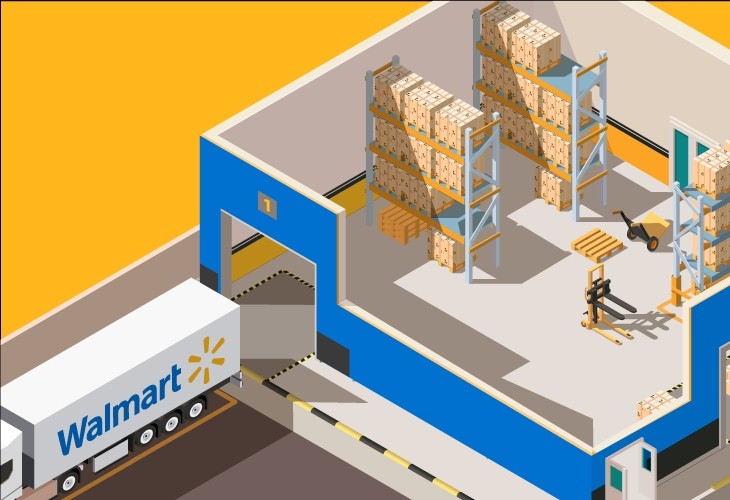
Backroom Augmented Reality
Between 2019 - 2020 I worked with a team of PM's and Engineers to evaluate and improve an inefficient inventory process. Our research led us to build an augmented reality experience that helps Walmart Associates complete the process 70% faster.
Discovery
Our team visited several stores and worked several shifts to grow our understanding of the problem area. Along the way, we interviewed many Store Associates and Home Office subject matter experts.
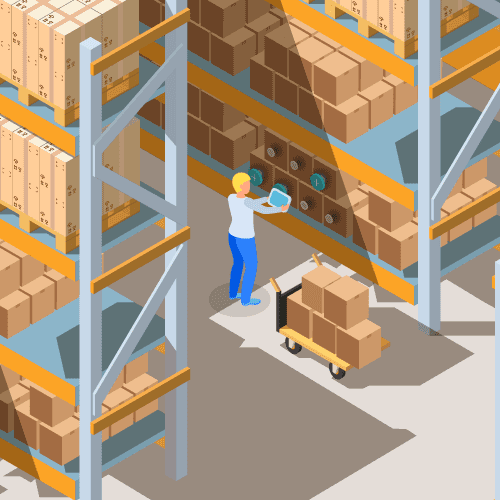
Define
Using our service journey map, we identified and prioritized the most important problems to solve. We prioritized a list of ~15 major problems based on level of impact, downstream effects (multiple problems could likely be solved by solving a single problem), and how quickly we thought a problem could be solved.
We prioritized shortening a lengthy process, and building trust that the system was giving accurate information.
Problem Statement
As a Walmart Associate working in the backroom, I need a way to quickly record inventory counts. I also need to be able to trust that the system is giving me accurate results.
Design
Environment
Iterations
We prototyped different backroom and process configurations in multiple stores to design a shorter and more trustworthy process.
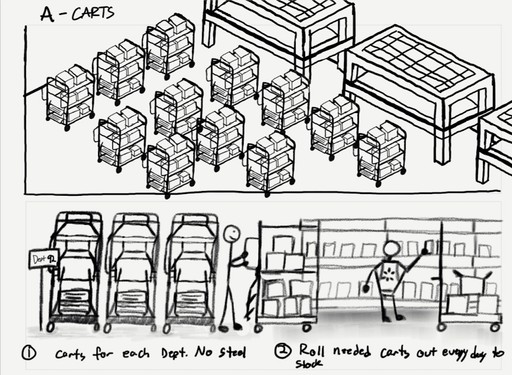
Ultimately we created an easier numbering system for backroom locations, including a way for AR devices to interact with backroom locations and inventory.
Technology
We tried out various levels of technology (including removing existing technology). We also explored different technology solutions like RFID, AR, and other hardware implementations.
Solution
Removing the mobile devices turned a couple departments into chaos for a couple weeks. AR headsets were a cool idea, but ultimately too costly. We ultimately decided to build an AR experience built for the existing handheld device.
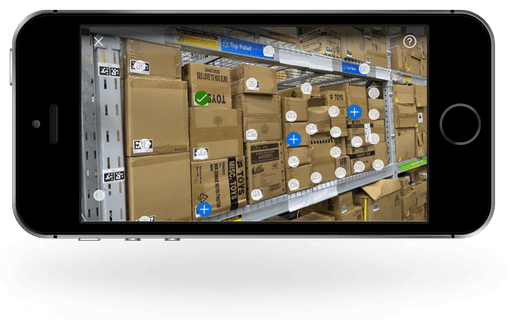
User Interface
Iterations
We had to achieve a balance of information density and minimalism. AR can be overwhelming to users, and it can be tricky to strike the right balance between too much and too little.
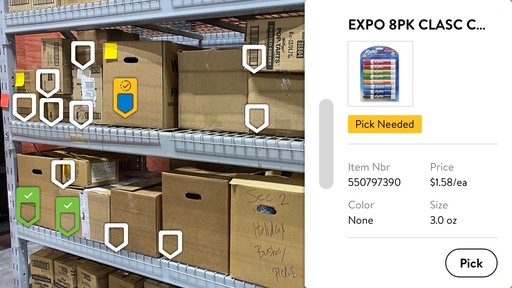
We used a thumb-sized marker to indicate that the device read a box label. These markers would indicate whether action was needed on the box or not, and whether it had been picked by the user. The user could long press on any marker to see more information about the item.







